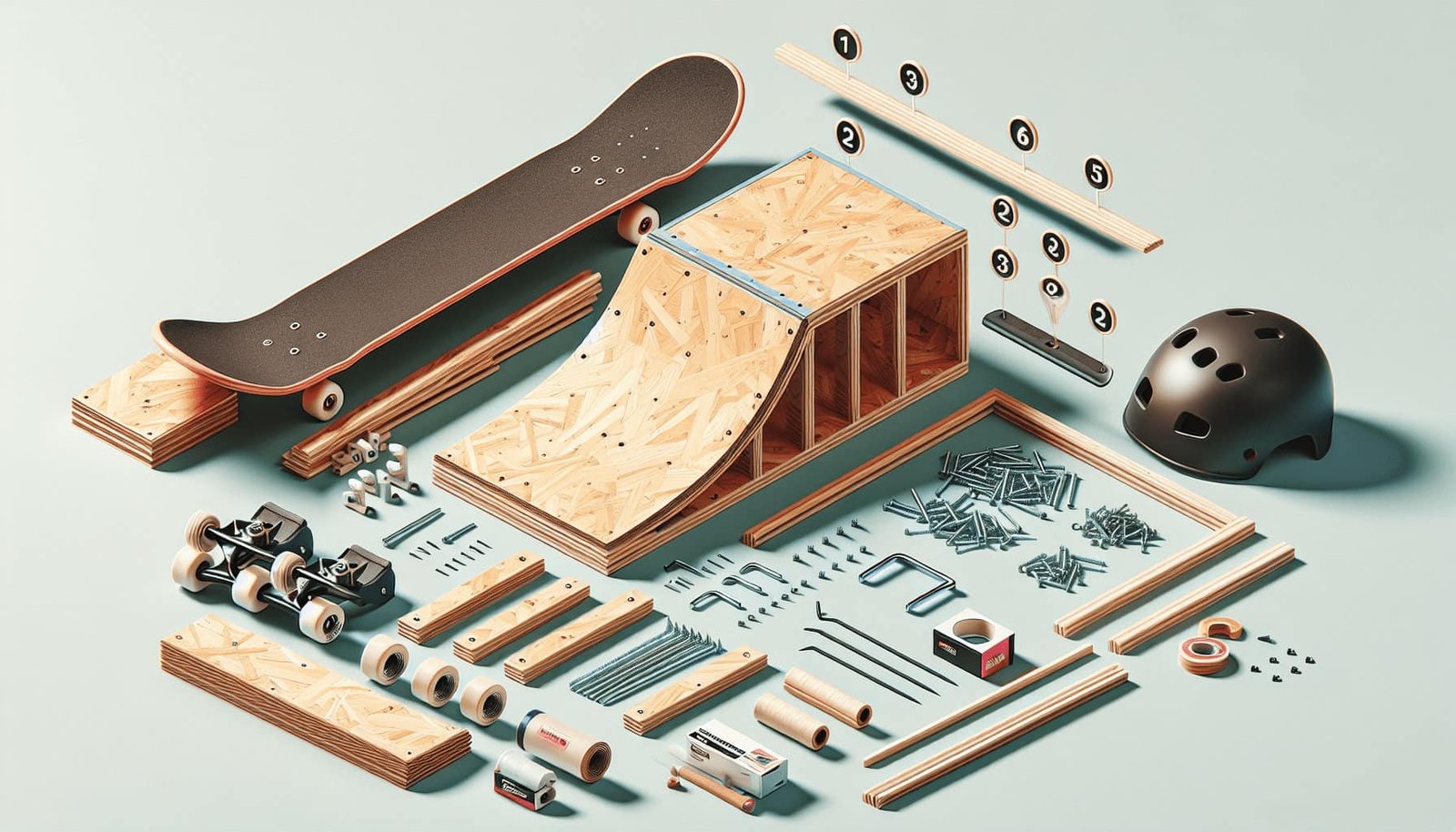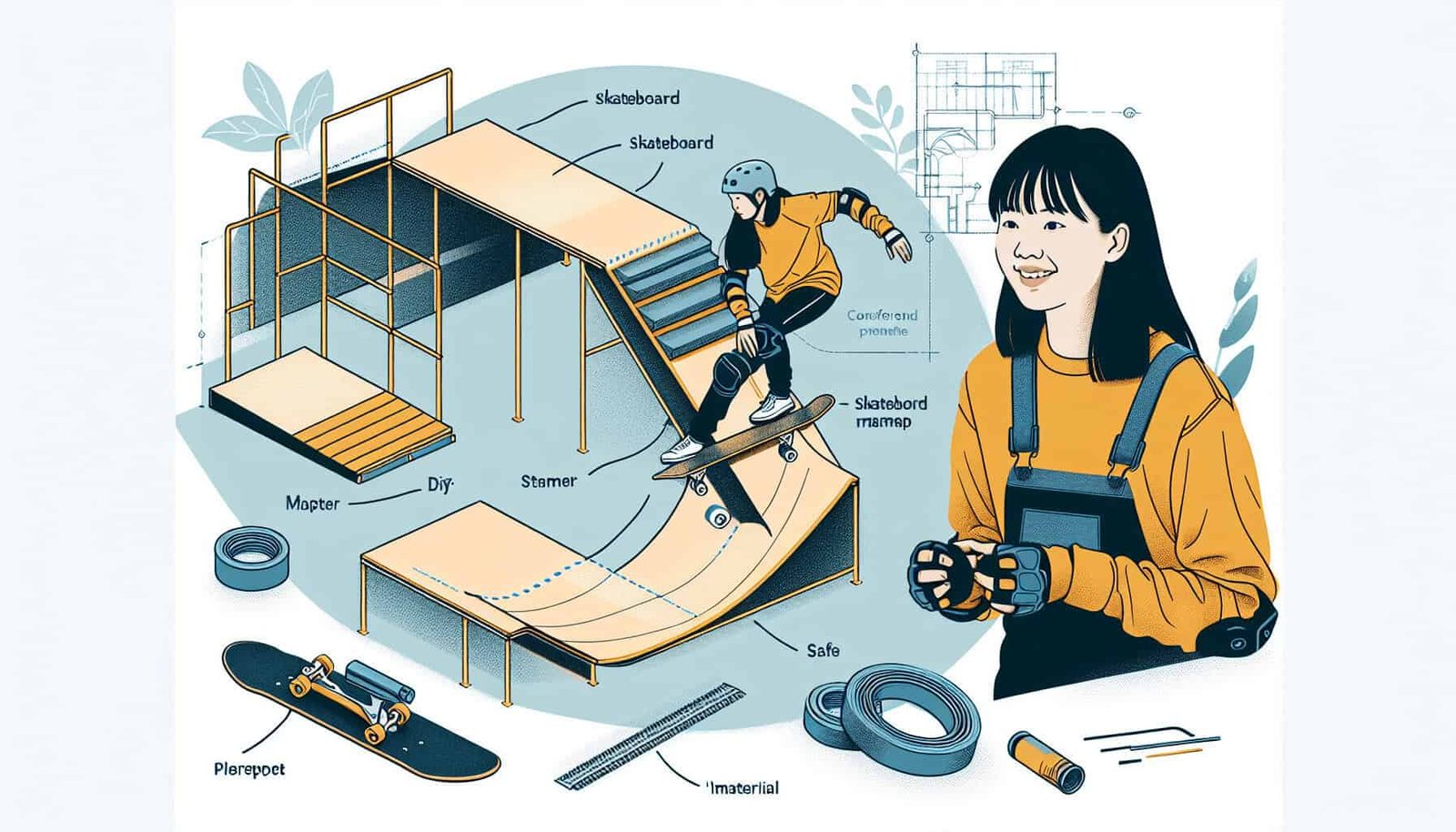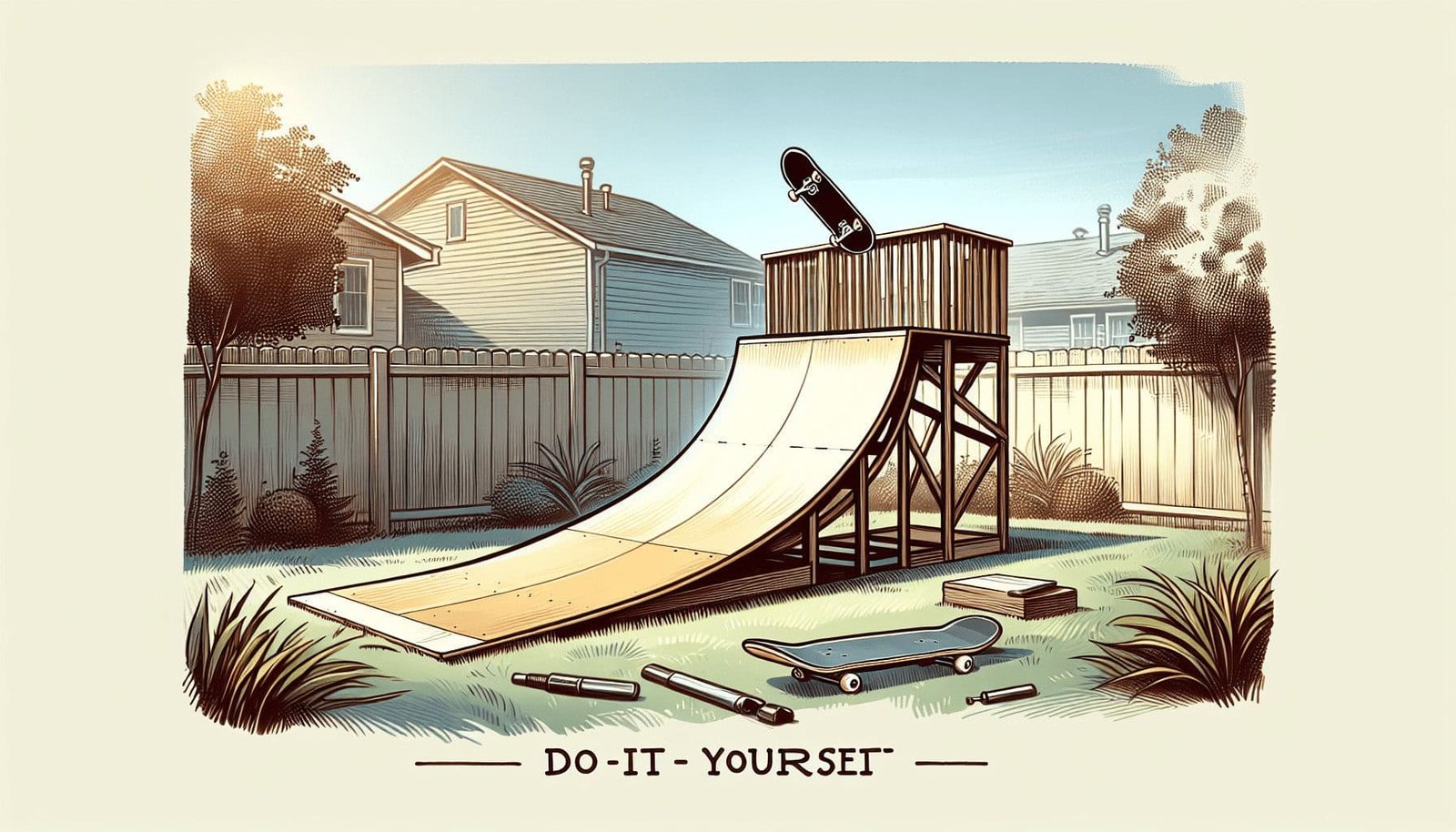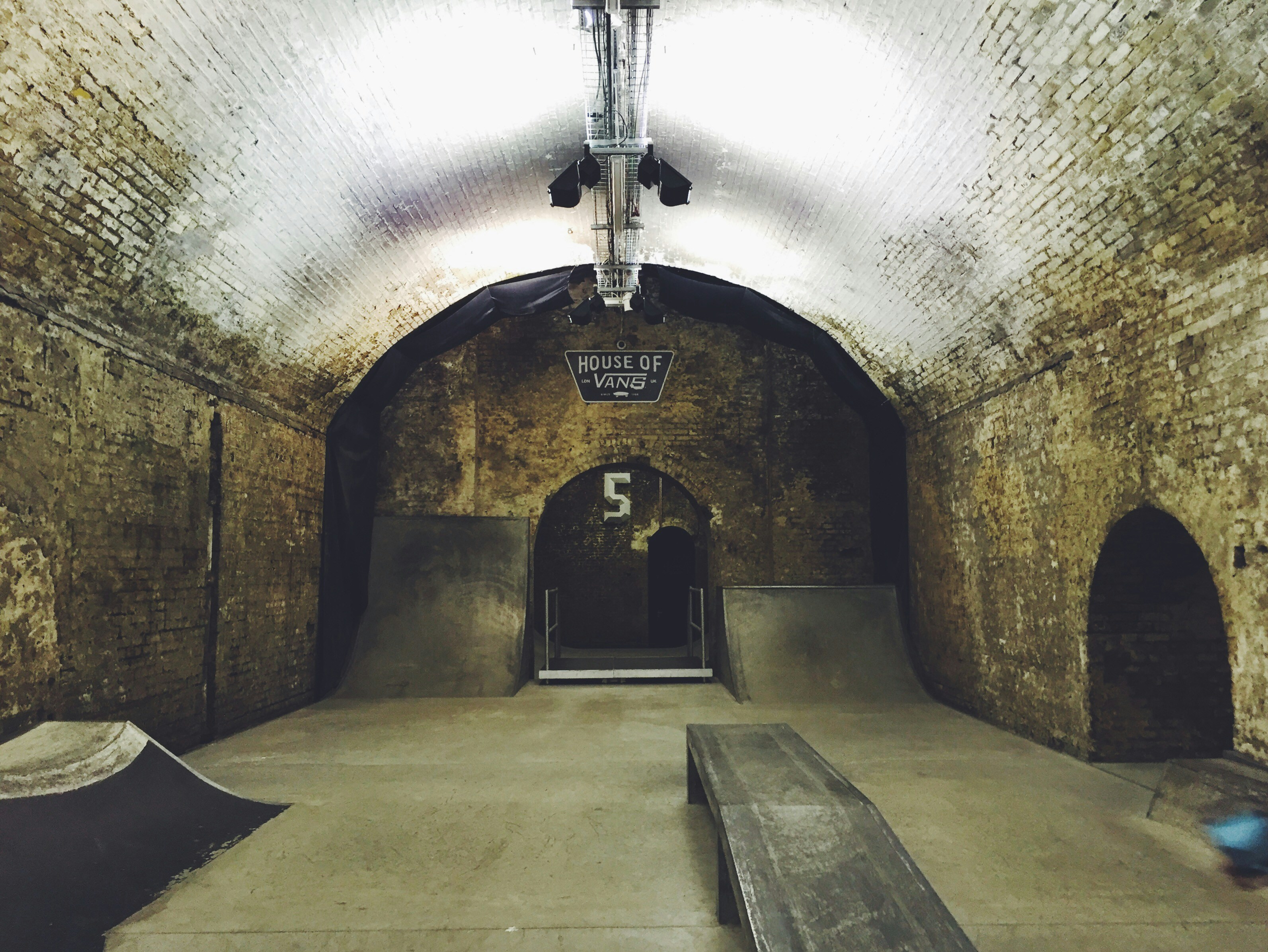Are you searching for budget-friendly DIY skateboard ramp plans? Look no further! In this article, we have compiled a variety of recommendations for ramps that won’t break the bank. Whether you’re a beginner skateboarder or a seasoned pro, these plans will help you create the perfect ramp to practice your tricks and boost your skills. Get ready to embark on an exciting skateboarding adventure with these affordable and easy-to-follow designs!
Types of DIY Skateboard Ramps
Quarter Pipe
A quarter pipe is a common type of skateboard ramp that is shaped like a quarter of a pipe. It consists of a curved ramp with two transitions, allowing skaters to perform tricks and gain momentum. Quarter pipes are versatile and great for skaters of all skill levels.
Bank Ramp
A bank ramp is a simple and popular skateboard ramp option. It is essentially a sloping ramp with a flat surface at the top. Bank ramps allow skaters to gain speed and launch off the flat surface, making them ideal for practicing tricks and jumps.
Pyramid
A pyramid ramp is a unique and exciting option for skateboarders. It consists of multiple ramps joined together at the center, forming a pyramid-like shape. Pyramid ramps offer various angles and surfaces for skaters, making them perfect for experimenting with different tricks and combinations.
Flat Rail
A flat rail is a straight metal rail that is usually used for grinding tricks. It can be easily incorporated into a skatepark or built as a standalone ramp for practicing specific tricks. Flat rails are relatively simple to construct and provide skaters with endless opportunities for honing their rail skills.
Manual Pad
A manual pad is a flat surface designed specifically for manual tricks. It is typically a rectangular platform with a smooth surface, allowing skaters to balance on their back wheels and perform tricks such as manuals and nose manuals. Manual pads are ideal for skaters who want to enhance their technical skills.
Considerations before Building
Available Space
Before embarking on a DIY skateboard ramp project, it is crucial to consider the available space in your backyard or garage. Different types of ramps require different dimensions, so make sure you have enough room for the ramp of your choice. Measure the area and ensure that there is ample space for the ramp, as well as for skaters to comfortably perform tricks.
Local Regulations
It is essential to check your local regulations before building a skateboard ramp. Some neighborhoods or municipalities may have specific rules or restrictions concerning the construction of ramps. Ensure that you can legally build a ramp on your property and comply with any necessary permits or regulations.
Budget
Determining your budget is an important step in planning your DIY skateboard ramp project. Consider the cost of materials, tools, and any additional features you might want to include. It’s crucial to set a realistic budget to ensure that you can complete the project without overspending.
Skill Level
Assessing your skill level is essential when deciding on the type of ramp to build. If you are a beginner or intermediate skater, it’s advisable to start with a simpler ramp design like a quarter pipe or bank ramp. These ramps are easier to construct and are more forgiving for less experienced skaters. More advanced skaters might consider building a pyramid or incorporating challenging features into their ramps.
Online Resources for DIY Ramp Plans
Websites with Free Ramp Plans
There are several websites that offer free ramp plans for DIY skateboard ramps. These websites provide detailed instructions, diagrams, and material lists to help you build your ramp accurately. Some popular websites include DIYskate.com, Instructables, and RampPlans.org. Make sure to browse these websites and find the ramp plans that suit your preferences and skill level.
YouTube Channels with Ramp Building Tutorials
YouTube is a goldmine of instructional content, and ramp building tutorials are no exception. Many experienced skateboarders and ramp builders share their expertise on YouTube, providing step-by-step guides on constructing various types of ramps. Channels such as Braille Skateboarding, Skateboarding Made Simple, and Rampbuilds are great resources for visual learners who prefer video instructions.
Skateboard Community Forums
Skateboard community forums are another valuable resource for finding DIY ramp plans and gathering information from fellow skaters and builders. Forums like Skateboard-City.com, SkateboardingForum.com, and Reddit’s r/skateboarding community have dedicated sections for ramp building discussions. Engaging with these forums can help you gain insights, ask questions, and learn from the experiences of others in the skateboarding community.
Recommended Budget-friendly Ramp Plans
Simple Quarter Pipe Design
A simple quarter pipe is a great starting point for DIY ramp builders. It consists of a curved ramp and transitions on both sides, providing a smooth surface for skaters. Building a quarter pipe requires basic carpentry skills and can be constructed using readily available materials such as wood, plywood, and screws. Many free ramp plans online offer step-by-step instructions for building a simple and budget-friendly quarter pipe.
Low-cost Bank Ramp Construction
If you’re looking for a cost-effective ramp option, a bank ramp is an excellent choice. Bank ramps are relatively easy to build and require less material and labor compared to other types of ramps. With some plywood, screws, and a few basic tools, you can construct a bank ramp that offers a smooth slope and a flat surface for tricks and jumps.
Affordable Pyramid Ramp Blueprint
For skaters craving a more dynamic ramp setup, a pyramid ramp is a budget-friendly option. Building a pyramid ramp requires additional materials and woodworking skills, but the end result is worth the effort. By following detailed plans and utilizing affordable materials such as plywood, 2x4s, and additional hardware, you can create a multi-level ramp that offers endless possibilities for creative tricks and combinations.
DIY Flat Rail Instructions
For skaters focused on honing their rail skills, building a flat rail is a cost-effective and practical solution. Flat rails can be constructed using metal pipes, wood, and cement for stability. With some simple welding or carpentry skills and a few basic tools, you can assemble a flat rail that allows for grinding and sliding tricks without breaking the bank.
Budget-friendly Manual Pad Guide
If technical tricks and manual balance are your focus, building a manual pad is a fantastic option. A manual pad can be constructed using plywood, screws, and a smooth surface material such as Formica or Skatelite. By following DIY ramp plans and utilizing affordable materials, you can create a manual pad that enhances your technical skills and adds versatility to your skateboarding practice.
Materials and Tools
Recommended Wood Types
When building a skateboard ramp, it is important to select the right type of wood that can withstand the demands of skateboarding. Plywood is commonly used for the ramp surface due to its strength and durability. Marine-grade plywood, specifically designed for outdoor use, is an excellent choice for ramps exposed to the elements. Additionally, using pressure-treated lumber for the framing and support structure ensures longevity and stability.
Hardware and Fasteners
Choosing the correct hardware and fasteners is crucial for the structural integrity of your ramp. Galvanized or stainless steel screws and bolts are recommended for their corrosion resistance. It’s important to use the appropriate size and length of screws and bolts while assembling the ramp to ensure a secure and stable structure. Additionally, using washers and lock nuts adds an extra layer of strength to the construction.
Additional Materials
Depending on the type of ramp you are building, you may need additional materials such as metal pipes for rails or handrails, skateboard wax for creating smooth surfaces, and various protective coatings or paints. These additional materials add functionality and aesthetics to your ramp, and it’s important to account for them in your budget and planning.
Essential Tools for Construction
To build a skateboard ramp, you will need a set of essential tools including a circular saw or jigsaw for cutting wood, a drill for making holes and driving screws, a level for ensuring accuracy, a tape measure for precise measurements, a ruler or straight edge for drawing guidelines, and safety equipment such as goggles and gloves. Having the right tools on hand will make the building process smoother and more efficient.
Step-by-step Ramp Building Instructions
Preparation and Site Selection
Before starting construction, clear the area where you plan to build the ramp. Remove any debris, rocks, or vegetation that might interfere with the construction process. Ensure that the ground is level and stable to provide a solid foundation for the ramp. Take into consideration factors such as sunlight exposure, nearby structures, and the flow of traffic in the area.
Marking and Measuring
Using the ramp plans as a guide, mark the precise measurements and angles on the plywood and other materials. Double-check all measurements to ensure accuracy and symmetry. Utilize a ruler, tape measure, and a level to mark the cutting lines and angles properly.
Cutting and Assembling the Frame
Using a circular saw or jigsaw, cut the plywood and other materials according to the marked measurements. Assemble the frame by attaching the cut pieces together using screws and bolts. Ensure that the frame is sturdy and level, and make any necessary adjustments before proceeding.
Attaching the Ramp Surface
Once the frame is assembled, carefully attach the ramp surface to the frame using screws or bolts. Ensure that the surface is securely fastened and free of any gaps or loose areas. Pay attention to the transitions and curves, ensuring a smooth and continuous surface for skaters.
Finishing Touches
After attaching the ramp surface, it’s time to add any additional features such as rails, handrails, or skate deterrents if desired. Sand the edges and any rough surfaces to prevent splinters. Apply protective coatings or paint to enhance the ramp’s durability and aesthetic appeal. Lastly, double-check all connections and make sure everything is securely fastened before inviting skaters to test the ramp.
Safety Considerations
Wear Protective Gear
Safety should always be a priority when skateboarding. Make sure to wear proper protective gear, including a helmet, knee pads, elbow pads, and wrist guards. These safety items can prevent serious injuries and provide peace of mind while skating on your DIY ramp.
Ensure Sturdy Construction
Before using the ramp, thoroughly inspect the construction for any loose connections or weaknesses. Ensure that all screws, bolts, and hardware are tightened and secured. A sturdy and well-built ramp minimizes the risk of accidents and ensures a safe skateboarding experience.
Check for Smooth Surfaces
Inspect the ramp surface regularly for any cracks, splinters, or rough areas that could pose a risk to skaters. Sand down any rough surfaces and repair any damaged areas promptly. A smooth and well-maintained surface allows skaters to perform tricks safely and comfortably.
Inspect for Stability
Regularly check the frame and support structure for stability. Over time, the ramp may experience wear and tear, which can affect its stability. Inspect the ramp for any signs of sagging, warping, or structural damage. Address any issues promptly to maintain a safe environment for skaters.
Tips and Tricks for Building on a Budget
Reusing and Recycling Materials
Consider repurposing materials from previous construction projects or salvaging materials from other sources. Reusing plywood, pipes, or metal rails can significantly reduce costs. Additionally, explore local recycling centers or donation sites for materials that can be repurposed for your ramp build.
Finding Discounts and Deals
Take advantage of sales, clearance items, or discounts from hardware and building supply stores. Shop around and compare prices to find the best deals on materials. Utilize online coupons or sign up for newsletters to receive discounts or notifications of special promotions.
Prioritizing Essential Features
When working with a limited budget, prioritize essential features of the ramp. Focus on constructing a solid structure, ensuring the surface is smooth and safe, and adding any necessary support. Optional features can be added later when your budget allows or skills improve. It’s important to have a functional and safe ramp, even if it lacks certain bells and whistles.

Maintenance and Repair
Regular Cleaning and Inspection
Regularly clean the ramp surface to remove dirt, debris, or any other substances that may impact skaters’ performance. Inspect the ramp for any signs of damage or wear, paying close attention to screws, bolts, and connections. Clean and tighten any loose hardware and address any maintenance issues promptly.
Replacing Damaged Parts
In the event of significant damage, such as severe cracking or structural issues, it may be necessary to replace certain parts of the ramp. Replace damaged plywood, broken rails, or any other components that pose a risk to skaters. Ensure that the replacement parts are of the same quality and durability as the original materials.
Refurbishing and Repainting
Over time, the ramp may lose its aesthetic appeal due to exposure to the elements or constant use. Refurbish the ramp by sanding the surface, filling any cracks or holes, and repainting it with high-quality exterior paint. This not only improves the ramp’s appearance but also protects it from further damage and extends its lifespan.
Conclusion
Building your own skateboard ramp can be a rewarding and budget-friendly DIY project. With careful planning, the right materials, and a dedication to safety, you can create a ramp that provides endless hours of skateboarding fun. Whether you choose a quarter pipe, bank ramp, pyramid, flat rail, or manual pad, each type offers its own unique experience for skaters of all skill levels. Exploring online resources, selecting affordable ramp plans, and utilizing budget-friendly tips and tricks will help you create a ramp that meets your needs while staying within your budget. So grab your tools, gather your materials, and get ready to enjoy the excitement of skateboarding on a ramp that you built with your own hands





